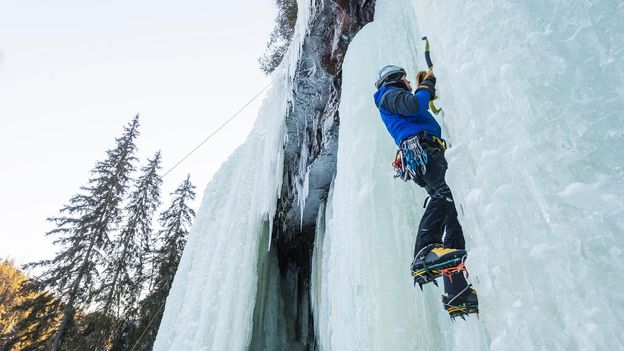Swedish ice-climbing instructor Markus Nyman warms up his students with an off-piste ski tour, snaking past pine trees so thick with powder that locals describe them as “snow ghosts”. They’re only a few minutes’ slalom from the main chair lift that takes alpine adventurers to the top of the slopes of Duved, a 17th-Century village 640km north of Stockholm. But soon they’re swapping skis for crampons and poles for pickaxes as they prepare to scale a frozen waterfall in the middle of the forest.
Beginners as young as 12 aim to reach the top of an 8m near-vertical wall of thick ice
“The first feeling is so strange because you can walk on such slippery ice and have such a perfect grip,” explained Nyman. Many of his clients, he says, are families who want to “combine skiing in the resort with trying something challenging and new”. Beginners as young as 12 aim to reach the top of an 8m near-vertical wall of thick ice, using pickaxes to latch on to the frozen glaze and slowly haul themselves up the slippery crag. A top rope and harness keep them secure if they lose their hold. Star pupils can move on to an 18m icefall, if their muscles can take the strain while braving temperatures that can plummet to -20C.
